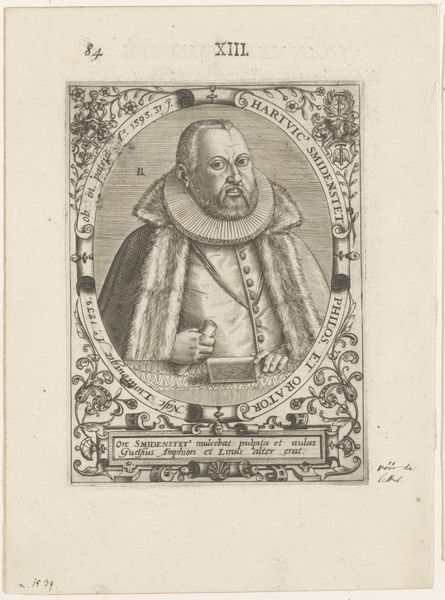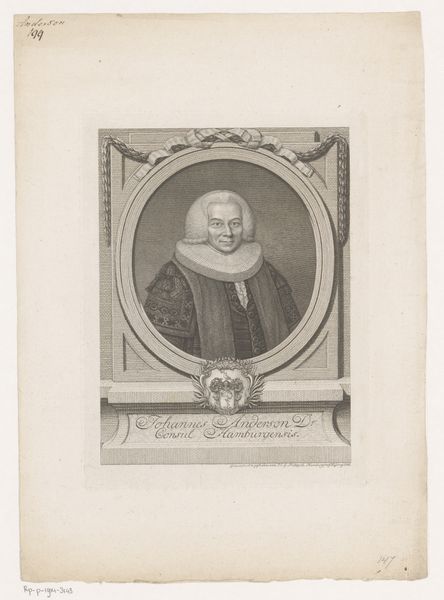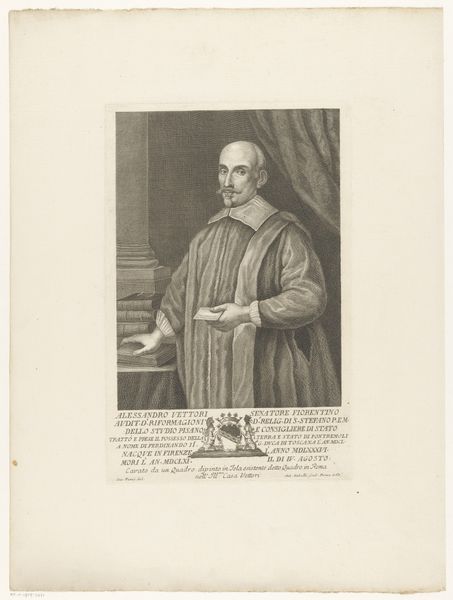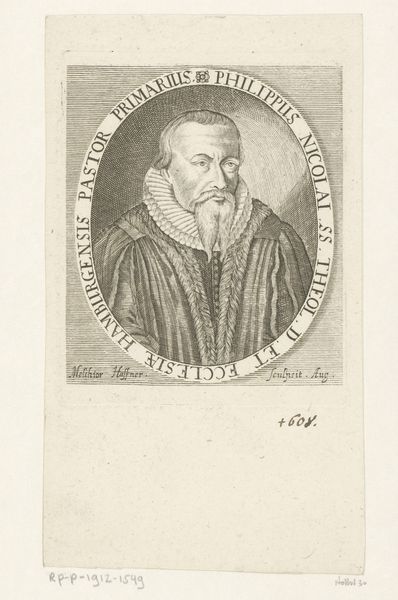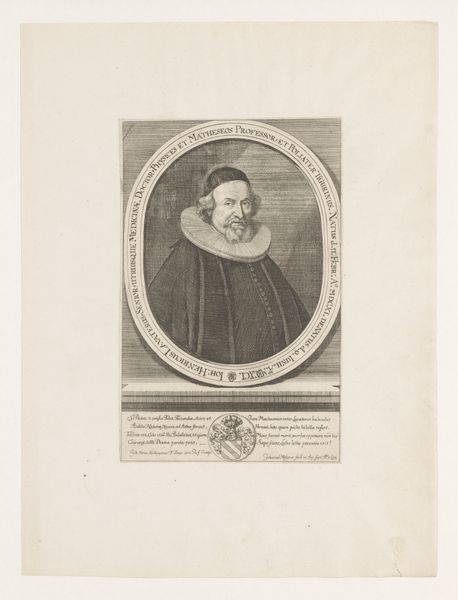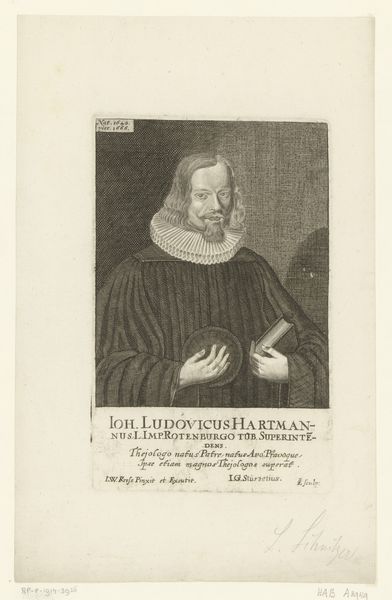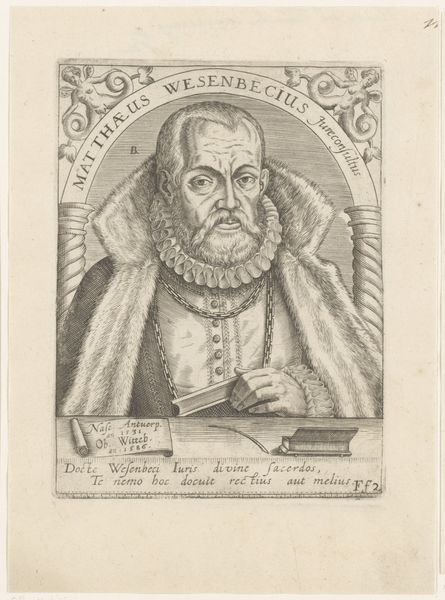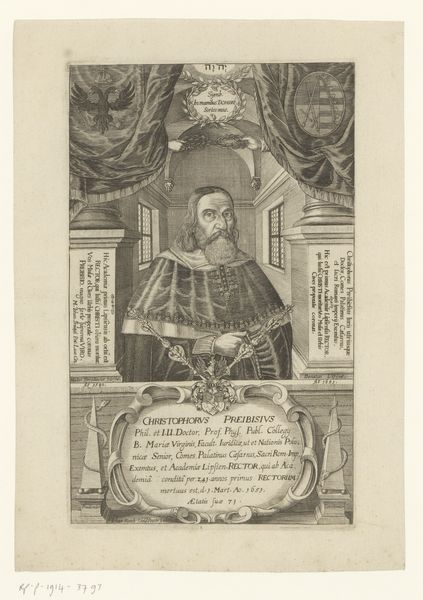
print, paper, engraving
#
portrait
#
aged paper
#
baroque
#
parchment
# print
#
book
#
old engraving style
#
paper
#
personal sketchbook
#
pencil work
#
history-painting
#
engraving
Dimensions: height 189 mm, width 104 mm
Copyright: Rijks Museum: Open Domain
Curator: Up next, we have an engraving entitled "Portret van Johann Taufrer," possibly created between 1617 and 1645 by Jacob van der Heyden. It’s a striking portrait rendered on paper. Editor: Yes, an immediate impression—there’s a real sense of gravitas here, a soberness achieved through the controlled lines of the engraving and the subject’s steady gaze. The dark shading provides an anchor to keep your attention firmly in place. Curator: Indeed. It adheres to several established conventions in portraiture of the Baroque era, using textual elements in tandem with the image. He holds a book in his left hand. In contrast to many artworks, which may have social meanings embedded in them, portraits like this acted more as commemorative symbols during this era. Editor: Note how the textural contrasts, too, serve to define form: the smooth paper-like quality of the face juxtaposed against the implied depth of the cloak. Does the somewhat severe presentation indicate something of his religious persuasion? Curator: Perhaps. Consider the broader cultural context. The work was made during the Counter-Reformation. Religious identity certainly would have been intertwined with one’s professional life as suggested here with the book he holds, so its effect on representation is undeniable. These were perilous times for many theologians. Editor: I am captivated by how effectively light and shadow are employed in such a constrained medium. Look closely at the details on the ruff of the collar or the implied fall of fabric—it is a masterpiece of constraint. One can’t help but note how different a painter might portray a similar subject in an entirely different artistic milieu, of course. Curator: True, though this also speaks to the dissemination of knowledge through printmaking, and therefore wider recognition of historical and philosophical works beyond wealthy landowners. In any case, regardless of these historical dimensions, this artist captures an intensity that extends beyond period representation. Editor: Agreed, seeing beyond surface appearance reveals much. It becomes more than just technique and style, becoming a compelling depiction. Curator: Right. It has made me ponder upon this sitter's world within those engraved lines.
Comments
No comments
Be the first to comment and join the conversation on the ultimate creative platform.
